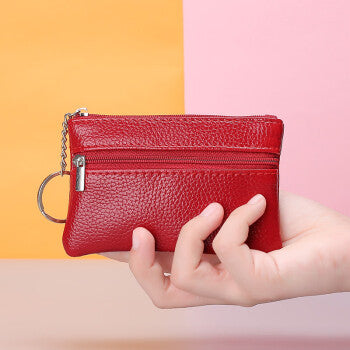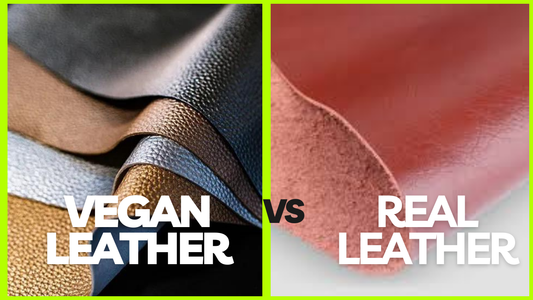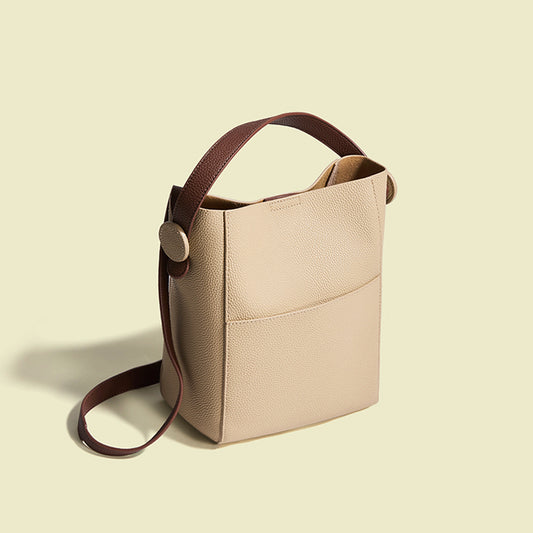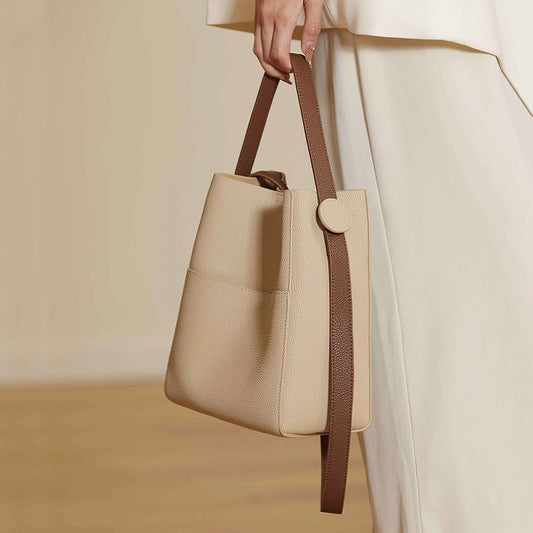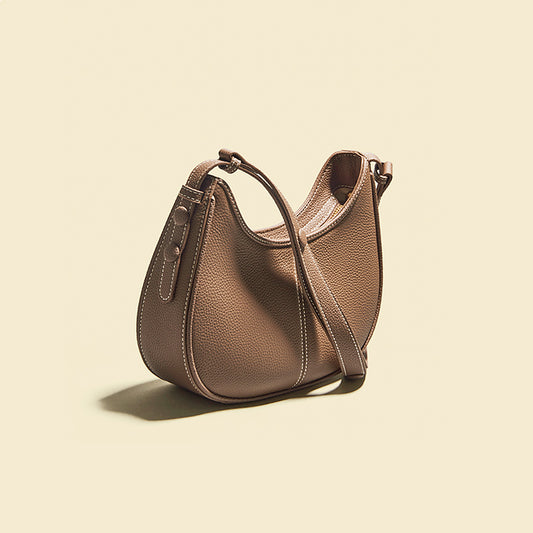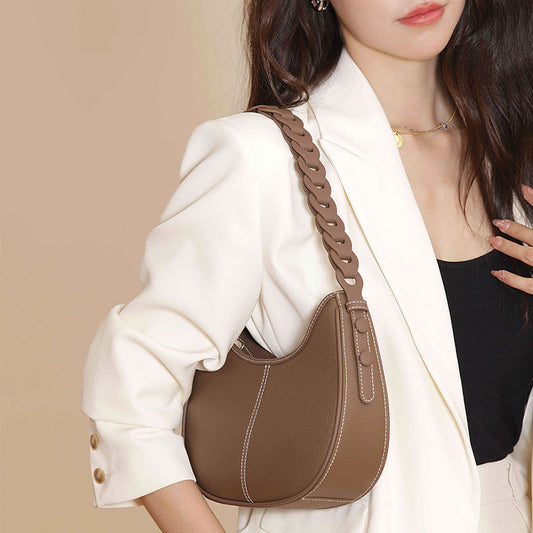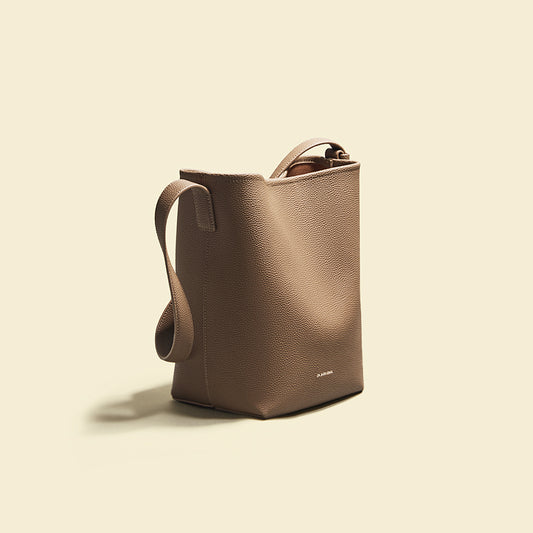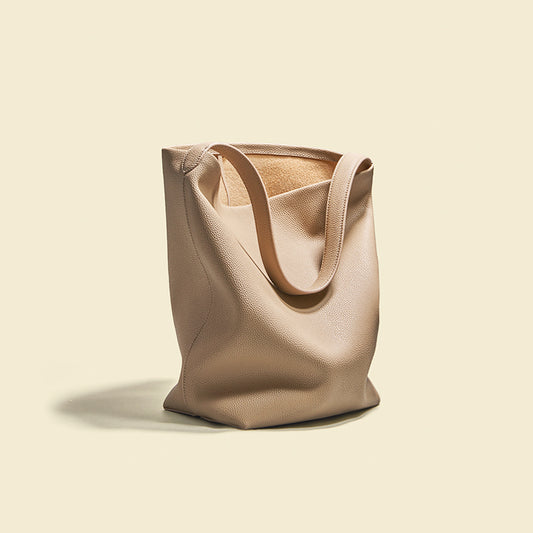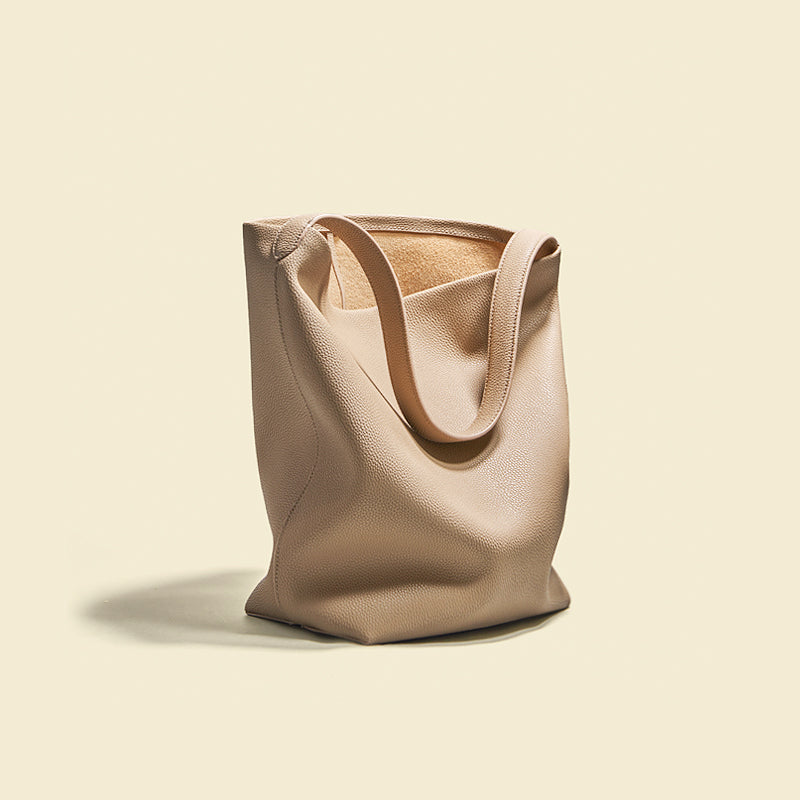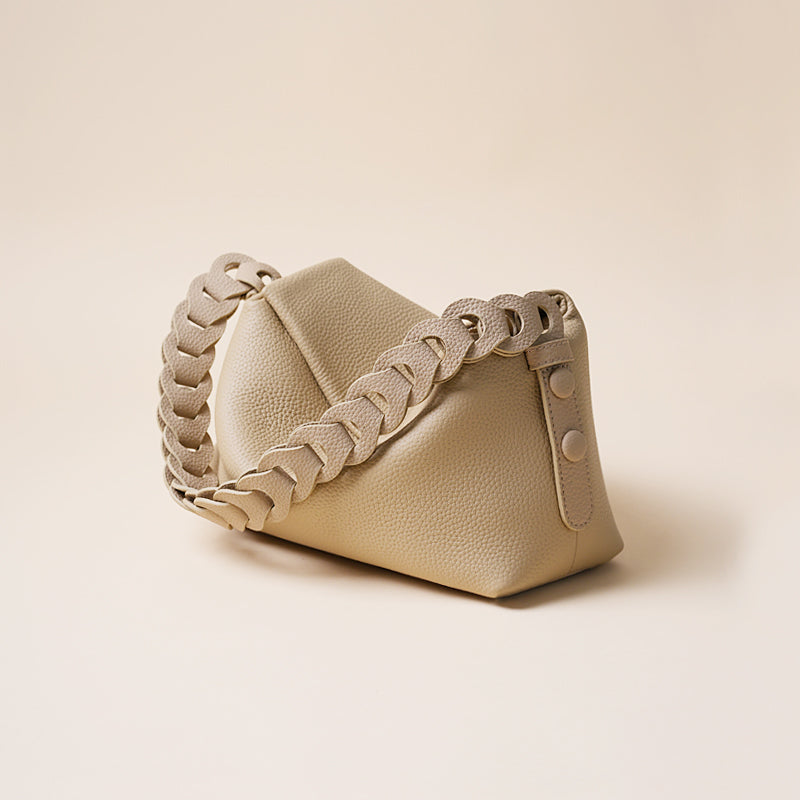Sheepskin and calfskin are two types of leathers used in the manufacture of leather bags, but what's the difference? Are they equally solid and durable? Which one looks better to you?
Some people love calfskin leather bags, while others prefer cowhide leather. It is not that calfskin is better than cowhide or vice versa. It is just a matter of which type of feel, smell, and look you like best.
Both types can give you long-lasting service and are easy to maintain. It would help if you understood the distinctions between them before choosing one for your bag.
Perhaps the most common leather is cowhide leather, which is used in a vast majority of designer handbags and fashion accessories.
Do you wonder which is better, leather produced from cowhides or calfskin? This article looks at the difference between the two and compares them based on the quality of the leather.
Cowhide leather and sheepskin leather are both luxurious materials but there are differences
Sheepskin leather is softer than cowhide, which makes it more comfortable to wear. It also has a lighter color, so it can show off the pattern of the fabric underneath.
Cowhide is more durable and waterproof, so it's more suitable for bags that will be carried around in bad weather. It's also less expensive than sheepskin.
Sheepskin is worth paying extra money for if you want a soft, luxurious bag that will show off your personal style while keeping your hands warm during winter months.
Cowhide is preferable if you need something sturdy enough to withstand being outdoors in harsh conditions.
Both cowhide and sheepskin leather are durable materials that can withstand heavy wear without wearing out quickly.
They also both feel soft to the touch but become stiffer when they're treated with chemicals or oils; this makes them more resistant to tearing when you use them to carry heavy items around like textbooks or laptops in your bag every day!
Cowhide leather is a hardy material, made from the skin of cattle. It's durable and has a rich, deep color that adds richness to your bag.
Sheepskin leather is softer and more pliable than cowhide, which makes it great for bags that need to be flexible and move with you. It's also worth noting that both materials can come in different shades of brown depending on the tanning process used to create the leather.
Cowhide leather is more durable than sheepskin.
Both cowhide and sheepskin leather are durable, but cowhide is more durable than sheepskin.
The key difference between these two types of leather is that cowhide is from an animal with a thick skin, like a cow, while sheepskin comes from an animal with a thinner skin, like a sheep.
In general, cowhide is considered more durable than sheepskin because it's thicker. In addition to this fact, cowhides also tend to come in larger quantities than sheepskins do, which means they're usually less expensive than their counterpart.
The first thing to note is that both animals come from different parts of the world. Cowhide is primarily used in North America and Europe, while sheepskin comes from Australia, New Zealand, and South America.
Cowhide is more durable than sheepskin; it's thicker and heavier than sheepskin, which means it can withstand more wear-and-tear over time. Sheepskin also has a tendency to curl up at the edges, which means it will fray over time if you don't take good care of it.
In terms of price, cowhide leather bags tend to be less expensive because they're so widely available.
The most expensive cowhide leather bags come from countries like Argentina and Brazil where cows are raised with special care for their hides—this results in higher quality leathers that are more uniform in color and texture than those produced elsewhere.
The main difference between cowhide and sheepskin is that cowhide is more economical to produce.
Cowhide leather is an affordable option for bags because it comes from cows, which are widely available in the United States. Sheepskin leather, on the other hand, generally comes from overseas countries such as Australia or New Zealand.
Cowhide leather can be processed into multiple types of products such as wallets and briefcases. Sheepskin is primarily used for gloves and coats because it is softer than cowhide.
Cowhide leather is made from the skin of cows, which is a byproduct of beef production. Cowhides are tanning-cured for about two weeks before being used for leather products.
This means that the hides can be processed without having to go through a lengthy process of raising the animal first. As a result, cowhide tends to be less expensive than other types of leathers.
Sheepskin, on the other hand, is more expensive because it's a byproduct of wool production. It's also thinner than cowhide, making it less durable and prone to damage if you don't take proper care of it.
Cowhide leather is thicker and usually heavier than sheepskin leather.
The thickness and weight of a leather bag is determined by the type of leather used to make it.
Cowhide is typically tanned using chromium salts and other chemicals, which makes it more durable, but also gives it a slightly different texture.
Sheepskin is often left untreated and has a finer texture that's more similar to human skin. Both will eventually wear down over time with use, but cowhide will wear out faster due to the chemicals used in the tanning process.
Cowhide leather is thicker, heavier and less expensive than sheepskin leather. It is usually made from the hide of an adult cow, while the skin of a sheep is used to make sheepskin. Cowhide leather is often used in jackets, vests and handbags. It can also be used to make shoes and wallets.
Sheepskin is thinner than cowhide and lighter in weight. It is often used in clothing such as gloves, hats and shoes.
Sheepskin is also popular for use in upholstery because it can be made into a soft material that can absorb moisture easily without being damaged by water or liquids like spills that might cause damage to other types of furniture surfaces such as wood floors or carpeting materials made from synthetic fibers that would not absorb liquid spills easily enough for safe use around children's toys or food items like milk bottles for toddlers who might otherwise spill their drinks onto the floor causing stains that would need cleaning up quickly before they dried onto the surface permanently
Sheepskin leather is softer and more flexible than cowhide.
Sheepskin leather is made from sheepskin that has been shaved off the animal. The material is then split into two layers: the top layer, which is called "grain leather," and the bottom layer, which is called "split leather." Grain leather can be used to make gloves and other items that need to be flexible, while split leather is more commonly used for bags.
Both cowhide and sheepskin are durable, stylish and functional. But when it comes to choosing between the two, there are a few key differences:
Sheepskin leather is softer and more flexible than cowhide. This makes it easier to fold or roll up into your bag, which can be especially useful for those who travel regularly. Also, sheepskin leather is generally thinner than cowhide—so if you're planning on storing bulky items in your bag, such as books or laptops, this may be worth considering.
On the other hand, cowhide leather is more durable than sheepskin. It's also thicker than sheepskin—which means it will protect your belongings better from rain and other elements when outdoors. Cowhide also holds up better over time than its counterpart; once you've worn it for awhile it will develop a patina that makes it look even more beautiful!
Sheepskin leather is softer and more flexible than cowhide, but it can be more expensive. Sheepskin leather is also more breathable than cowhide, which means that it helps reduce sweating in the summer.
Sheepskin is often used to make suede clothing and leather accessories.
Cowhide is the hide of a cow, which is the second largest domesticated animal after the dog. Cowhide can be tanned for use in the production of leather. The best quality cowhides are from cows that have been raised on pastureland without hormones or antibiotics.
Sheepskin is often used to make suede clothing and leather accessories. It's soft, durable, and has a unique texture that gives it an attractive appearance. Sheepskin is also known for its breathability, making it an ideal material for bags that need to be carried around during the cold winter months.
Sheepskin, when used in clothing and accessories, is generally a much softer material than cowhide. This means that if you're looking for something that will be comfortable to wear all day long, sheepskin might be more up your alley.
It's also more flexible and less likely to crack or peel than cowhide, so if durability is important to you, sheepskin may be a better option as well.
Cowhide has a thicker texture than sheepskin, which makes it feel warmer in cold weather and cooler in hot weather. It's also less likely to get damaged by water or oil-based liquids like gasoline or motor oil than sheepskin is.
Sheepskin has a natural lanolin coating that makes it naturally resistant to water.
Sheepskin has a natural lanolin coating that makes it naturally resistant to water. This means that sheepskin can be cleaned with soap and water, rather than needing special cleaning agents. The lanolin also provides some protection against mildew and mold. This feature makes sheepskin leather bags a better option for those living in rainy climates or who want to use their bag in the rain.
Sheepskin can be used as an alternative to cowhide leather, but it is not as strong as cowhide.
Sheepskin leather bags are more expensive than cowhide leather bags, but they are also more durable.
If you are looking for a stylish and functional bag that will last for years to come, then consider buying a sheepskin leather bag.
Cowhide, on the other hand, does not have this same protective layer. While cowhide can be treated with oil or wax to help protect it from moisture, this treatment will wear off over time and require reapplication if you want to keep protecting your cowhide bag's leather from moisture.
It's a matter of personal preference, but sheepskin is a popular alternative to cowhide for many reasons. Sheepskin has a natural lanolin coating that makes it naturally resistant to water, and unlike cows, sheep are not slaughtered for their skin.
Also, because sheep are more sensitive than cows and generally spend their lives outside grazing in pastures, their skin is thinner than that of a cow and therefore softer.
Conclusion:
As we have illustrated the differences between sheepskin and cowhide, I think it's safe to say that each material has its pros and cons.
Sheepskin is soft and flexible, while cowhide is tough and hard. Sheepskin is ethically produced, while cowhide may come from animals raised in less-than-humane conditions. Cowhide looks great with scuffs and scrapes on it, while sheepskin can become rigid and discolored if not properly cared for.
In this case, which is better calfskin or sheepskin, I have no doubt it will come down to personal preference in appearance.

